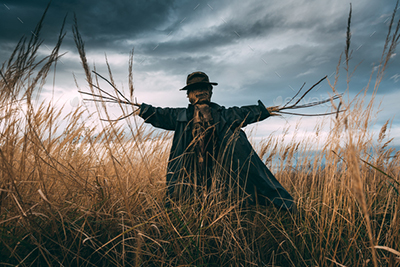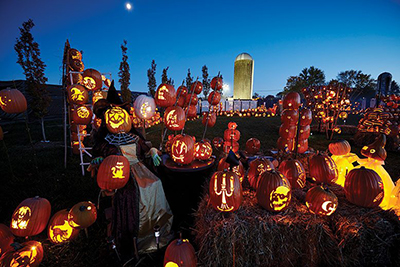10 Halloween Fun Facts - You'd Be Surprised How much This spooky Holiday Relies on Agriculture!
By: Emily Nason
Posted on:10/30/2018Halloween's ancient roots are as much about agriculture as scary costumes and candy

Halloween's ancient roots are as much about agriculture as scary costumes and candy
It’s believed the Halloween’s origins lie in the ancient Celtic festival of Samhain (pronounced sow-in), which was celebrated from October 31 into November 1, marking the end of the harvest season and the beginning of winter. It was a time of the year for the Celtic peoples of England, Ireland, Scotland, Wales, northern France, and Brittany to bring their cattle from summer pasture – to slaughter livestock that was unlikely to make it through the long, cold winter and to hold celebratory feasts to consume the meat and other foods that easily spoiled in an age before refrigeration.
Only 6 states produce a majority of the holiday’s pumpkins
Halloween wouldn't be the same without pumpkins, and thankfully, there are plenty of gourds to go around. According to the United States Department of Agriculture's National Agricultural Statistics Service, in 2014 the top pumpkin-producing states — Illinois, California, Ohio, New York, Pennsylvania, and Michigan — produced 1.31 billion pounds of pumpkins.
An Irish folktale inspired the phrase Jack-O-Lantern
The name Jack-O-Lantern first originated from an Irish folktale about a man named Stingy Jack who tricked the Devil over and over again. When Jack died, he was forced to walk the Earth with only a carved-out turnip and burning coal to help light his way.
People Didn’t Always Carve Pumpkins
Because Stringy Jack (From Irish Folklore) walked with a carved-out turnip, at first people in Ireland and Scotland grabbed turnips, beets, and potatoes to carve his scary "face." When the Irish brought the tradition to America, pumpkins were carved more often as they were more abundant.

People used to dance and sing for treats
At one time, it was customary to perform dances, songs, prayers, and plays, a practice called "mumming," in order to receive their treats, according to E.J.W. Barber's The Dancing Goddesses: Folklore, Archaeology, and the Origins of European Dance.
The night before Halloween is sometimes known as “Cabbage Night”
According to Live Science, some pranksters in the northeastern U.S. keep up with the stinky tradition of collecting rotten vegetables and leaving them near their neighbors' doors in honor of "Cabbage Night" on October 30th.
You can thank California for Halloween chocolate
Halloween candy wouldn't be the same without California. Why? According to the U.S. Census Bureau, the Golden State leads the nation in non-chocolate confectionary production. Out of the 409 sites that manufacture non-chocolate confections in the U.S., California is home to 45 of them.
Our modern conception of Halloween is based on the Celtic beliefs
It was believed that Samhain was a time when the boundaries between our world and the Otherworld, a place inhabited by the dead and supernatural creatures like fairies, monsters, demons, and the like, were lowered. The inhabitants of the Otherworld could make their way to our world and unsuspecting humans could find themselves in the Otherworld by accident or trickery. Villagers would dress in frightening outfits to try to fool these dark and dangerous creatures thought to be roaming around that night.
Pilgrims started the black cat superstition
It's been said that it's bad luck for a black cat to cross your path, especially on Halloween night. In the U.S., this superstition stems from the Protestant beliefs of the Puritan Pilgrims of Plymouth Colony. They disapproved of anything associated with witchcraft, and some believed the legend that witches could transform into black cats and back
Seeing a spider on Halloween could be a good thing!
Some say that when you see a spider on Halloween that it’s actually a dead relative paying you a visit. So don’t be so quick to squish them!
Feedback
re: 10 Halloween Fun Facts - You'd Be Surprised How much This spooky Holiday Relies on Agriculture!By: Jojo on: 10/31/2024Loved the article very interesting facts thank you so much!!
 Sign In
Sign In
 Sign In
Sign In
